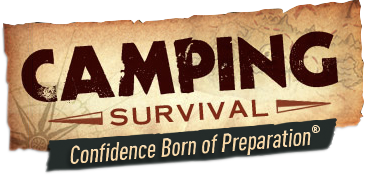
Mastering Redundancy in Your Bug-Out Bag: The Art of Space-Saving Survival
When it comes to survival, there's a golden rule: Two is one, and one is none. This mantra, known as the Rule of Redundancy, is a cornerstone of preparedness.
But how do you apply this rule to your bug-out bag—that precious little space that's your lifeline in an emergency? Let's dive into the art of packing a bug-out bag that's both compact and comprehensive.
The Rule of Redundancy: A Quick Primer
Before we get into the nitty-gritty, let's understand the Rule of Redundancy.
In survival situations, if you have only one of something and it breaks or gets lost, you're out of luck. But if you have a backup, you're still in the game.
Redundancy is about having backups for your essential items. But with the limited space in a bug-out bag, we need to be smart about what we pack.
The Bug-Out Bag: Your Portable Lifeline
A bug-out bag is a portable kit that contains the items one would require to survive for 72 hours when evacuating from a disaster. The key here is 'survive'. We're not packing for a luxury vacation; we're packing for survival.
The Art of Double Duty
The trick to achieving redundancy in a bug-out bag is to pack items that can pull double duty. These multitaskers save space while ensuring you have backups for essential functions. Let's look at some examples:

- Paracord: This lightweight nylon rope is a survivalist's dream. It can be used for building shelters, setting traps, or even as a makeshift tourniquet. And if you unravel it, the inner strands can serve as fishing line or sewing thread.
- Multi-tool: A good multi-tool can replace several individual tools, saving precious space. Look for one with a knife, pliers, can opener, and screwdriver at a minimum.
Related Read: Mastering MacGyverism: Unleashing the Full Potential of the Multi-Tool
- Bandana: This humble piece of cloth is a survival superstar. It can be used for filtering water, as a head cover, a bandage, a signal flag, and even as a makeshift bag.
- Duct Tape: Need to fix a hole in your tent? Duct tape. Need to bandage a wound? Duct tape. Need to mark a trail? You guessed it - duct tape. Its uses are limited only by your creativity.
- Trash Bag: A heavy-duty trash bag can serve as a poncho, a ground cover, a water collector, or a container for carrying items.
- Hand Crank Flashlight/Radio: This serves as a source of light, a way to receive emergency broadcasts, and some models even include a USB port for charging devices.
- Whistle: A whistle can be used for signaling for help, scaring off wildlife, or even for communication if you're with a group. Our 5-in-1 Survival Aid Tool and Whistle does even more with a waterproof matchbox, compass, and fire starter flint all in one little tool.

- Mirror: A mirror can be used for signaling, checking for injuries in hard-to-see places, or even for starting a fire if it's sunny.
- Tarp: A tarp is a versatile item that can serve as a shelter, a ground cover, a blanket, or even a stretcher in an emergency situation.
- Zip Ties: These are great for securing gear, repairing equipment, or even as makeshift handcuffs in a survival situation.
Packing Your Bag: The Strategy
Now that we've identified some double-duty items, how do we pack our bug-out bag? Here are some tips:
- Prioritize: Not all items are created equal. Prioritize items based on the Survival Rule of Threes - humans can survive three minutes without air, three hours without shelter in harsh conditions, three days without water, and three weeks without food.
- Compartmentalize: Use ziplock bags or packing cubes to organize items. This not only saves space but also makes it easier to find items in an emergency.
- Balance: Distribute weight evenly to make carrying the bag more comfortable. Put heavy items close to your back and balance weight on both sides.
- Accessibility: Pack items you'll need quickly, like a first-aid kit or flashlight, in outer pockets where you can reach them easily.
For a more in depth look at how to pack your bug-out bag, check out this article.

Practice Makes Perfect
Finally, remember that the best bug-out bag is the one you know how to use. Practice using each item in your bag, and regularly unpack and repack your bag to familiarize yourself with its contents and arrangement. This will save you precious time in an emergency when every second counts.
The Takeaway
Redundancy in a bug-out bag is not about cramming as many items as possible into your bag. It's about carefully selecting versatile items that can serve multiple purposes, and packing them in a way that maximizes space and efficiency. Remember, your bug-out bag is your lifeline in an emergency. Make sure it's packed in a way that ensures you're ready for anything.
In the end, the goal is to strike a balance between redundancy and space. It's a delicate dance, but with careful planning and a focus on multi-use items, you can create a bug-out bag that's both compact and comprehensive.
So, as you pack your bug-out bag, keep in mind the mantra of the survivalist: "Two is one, and one is none." But also remember that with a little creativity and planning, you can make the most of the precious little space you have. After all, survival isn't just about the gear you have; it's about how you use it.
